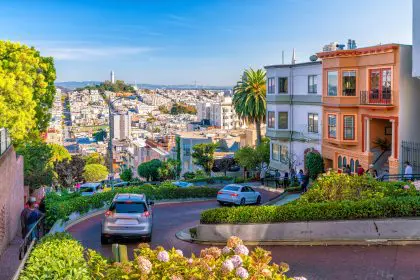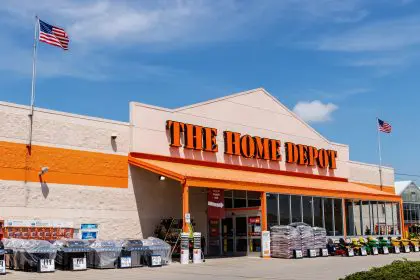In the ever-changing world of real estate, there’s one truth that both buyers and sellers dream of: investing in a home that never seems to lose its value. Why some neighborhoods never lose property value has long fascinated industry experts, investors and everyday homeowners alike. These pockets of enduring worth stand strong even when economic downturns, housing crashes or shifting trends shake other markets.
Understanding why some areas maintain — or even increase — their value can help buyers make smarter decisions, sellers plan more profitable exits and renters dream of future ownership. It also reveals something deeper about community, planning and what people truly want in the place they call home.
The combination of strategic factors creates a protective shield around certain neighborhoods, insulating them from broader market volatility. These areas demonstrate that real estate value extends far beyond square footage and curb appeal to encompass the entire ecosystem of community life.
The power of strategic location
It’s no surprise that location plays a huge role. Certain neighborhoods are simply blessed with prime geography: they may be near bustling downtowns, close to popular beaches or nestled against breathtaking mountains.
But it’s not just about pretty views. Proximity to jobs, major highways, reliable public transportation and airports can dramatically increase a neighborhood’s resilience. When people can easily access work, school, entertainment and services, demand remains high — even when the broader market cools.
Look at any major city: the neighborhoods closest to economic centers often see the most stable property prices. Buyers know that convenience pays off, and they are willing to pay a premium for it. The time saved in commuting translates directly into quality of life, making these locations consistently desirable across different economic cycles.
Geographic advantages create natural barriers to market fluctuations. Waterfront properties, hillside communities with views and areas with unique natural features maintain their appeal regardless of broader economic conditions because these assets cannot be replicated elsewhere.
Quality schools drive lasting demand
One of the biggest factors parents consider when buying a home is the quality of the local schools. Top-performing school districts can prop up property values even during national downturns. Families often refuse to compromise when it comes to education, creating consistent demand in these areas.
When neighborhoods are zoned for excellent schools, they don’t just attract current buyers — they attract future generations. This makes them incredibly resilient, especially as people increasingly prioritize long-term stability over short-term bargains.
The school effect extends beyond test scores and rankings. Well-funded districts often indicate higher property tax bases, better-maintained public facilities and more involved parent communities. These factors create a virtuous cycle where educational excellence reinforces neighborhood desirability and vice versa.
Even childless buyers recognize the value of good schools because they understand that strong educational systems attract stable, invested residents who maintain their properties and support local businesses.
Safety and community strength
Safety is another key reason why some neighborhoods never lose property value. Low crime rates, well-lit streets and a visible police presence create an environment where residents feel secure.
Safe neighborhoods are not just about statistics — they are about the emotional comfort of knowing your children can play outside, your neighbors are watching out for you and your investment won’t be threatened by sudden drops in desirability.
Community strength also matters here. When residents band together, organize events, watch over one another’s homes and actively participate in local decision-making, they help maintain a neighborhood’s appeal. A tight-knit, proactive community can weather changes that might rattle less organized areas.
The social fabric of safe neighborhoods often includes active homeowners associations, neighborhood watch programs and regular community gatherings. These institutions create informal networks that protect property values by ensuring consistent maintenance standards and addressing problems before they escalate.
Neighborhood identity and character
Beyond location, identity matters. Some neighborhoods have a rich historical or cultural significance that anchors their appeal. Whether it’s cobblestone streets lined with historic brownstones or a district known for its thriving arts scene, these places hold emotional and cultural weight.
A neighborhood with a distinct identity attracts residents who are deeply invested in maintaining its charm and reputation. Community pride often translates into well-maintained homes, flourishing local businesses and active neighborhood associations — all of which help preserve and enhance long-term value.
Character neighborhoods often benefit from historical preservation districts, architectural guidelines and zoning restrictions that protect their unique features. These regulations prevent inappropriate development and maintain the aesthetic qualities that originally attracted residents and visitors.
The emotional connection people feel to distinctive neighborhoods creates a premium that extends beyond basic housing needs. Buyers pay extra for the privilege of living in places with stories, traditions and recognizable character.
Access to amenities and green spaces
Walkable neighborhoods with easy access to grocery stores, coffee shops, gyms, parks and entertainment tend to hold their value well. People crave convenience and connection — and they’re willing to pay for it.
Green spaces, in particular, offer both emotional and practical benefits. Parks, tree-lined streets and public gardens don’t just improve aesthetics; they boost physical and mental health, offer spaces for social connection and provide a natural buffer against noise and pollution.
Neighborhoods rich in these amenities are often magnets for professionals, families and retirees alike, creating a balanced demand across age groups. The diversity of residents helps stabilize the housing market by ensuring demand from multiple demographic segments.
The walkability factor has become increasingly important as urban planning trends emphasize mixed-use development and reduced car dependency. Neighborhoods that already possess these qualities benefit from growing preferences for sustainable, pedestrian-friendly living.
Economic anchors and institutional stability
Some neighborhoods are bolstered by powerful economic anchors, such as universities, hospitals, research centers or major corporate campuses. These institutions generate steady employment, draw talented professionals and create a ripple effect of supporting businesses.
A neighborhood adjacent to a thriving university or a cutting-edge tech hub is more insulated from broader market fluctuations. As long as these economic engines continue to hum, nearby property values remain solid.
Major employers also contribute to neighborhood stability by:
- Providing consistent housing demand from employees
- Supporting local businesses and services
- Attracting secondary industries and professional services
- Contributing to local tax bases through property and business taxes
The presence of multiple economic anchors rather than dependence on a single employer provides additional security against market downturns or corporate relocations.
Smart urban planning and development
Thoughtful urban planning also plays a critical role in why some neighborhoods retain value. Areas that are intentionally designed with mixed-use spaces, balanced traffic flow and a blend of residential, retail and office spaces tend to thrive.
Zoning regulations, building codes and community development plans shape how a neighborhood grows. When cities invest in smart growth, protect green spaces, limit overdevelopment and promote sustainability, they help ensure long-term resilience.
It’s no accident that some neighborhoods become timeless while others decline. Careful planning lays the foundation for lasting appeal by preventing the kinds of development that can damage neighborhood character or overwhelm local infrastructure.
Forward-thinking communities are increasingly incorporating climate resilience, energy efficiency and environmental sustainability into their planning processes, positioning themselves for future challenges and opportunities.
Making informed real estate decisions
For homeowners, understanding why some neighborhoods never lose property value can guide decisions about when to sell, how to renovate or when to hold onto a home for future appreciation.
For buyers, knowing what to look for — such as strong schools, low crime rates, excellent amenities and thoughtful planning — can help avoid costly mistakes. It’s not just about buying a beautiful house; it’s about buying into a resilient community.
Even renters can benefit from paying attention to these patterns, as rents often follow property values. Living in a stable, desirable neighborhood can improve overall quality of life and offer a clearer path toward future ownership.
The key is recognizing that neighborhood value stems from a combination of factors working together rather than any single attribute. The most resilient areas typically excel in multiple categories, creating redundancy that protects against various market pressures.
Why some neighborhoods never lose property value is not a mystery — it’s a combination of location, identity, safety, schools, amenities, economic strength and emotional connection. But at its heart, it’s about investing in more than just a house.
It’s about finding places where people want to live, where they feel supported, where their children can thrive and where they see a promising future. For buyers, sellers and even renters, paying attention to these factors can mean the difference between a smart investment and a risky gamble.
As cities continue to grow and change, the neighborhoods that protect and nurture these qualities will remain examples of long-term value — proving that when community, planning and passion come together, some places truly stand the test of time.














